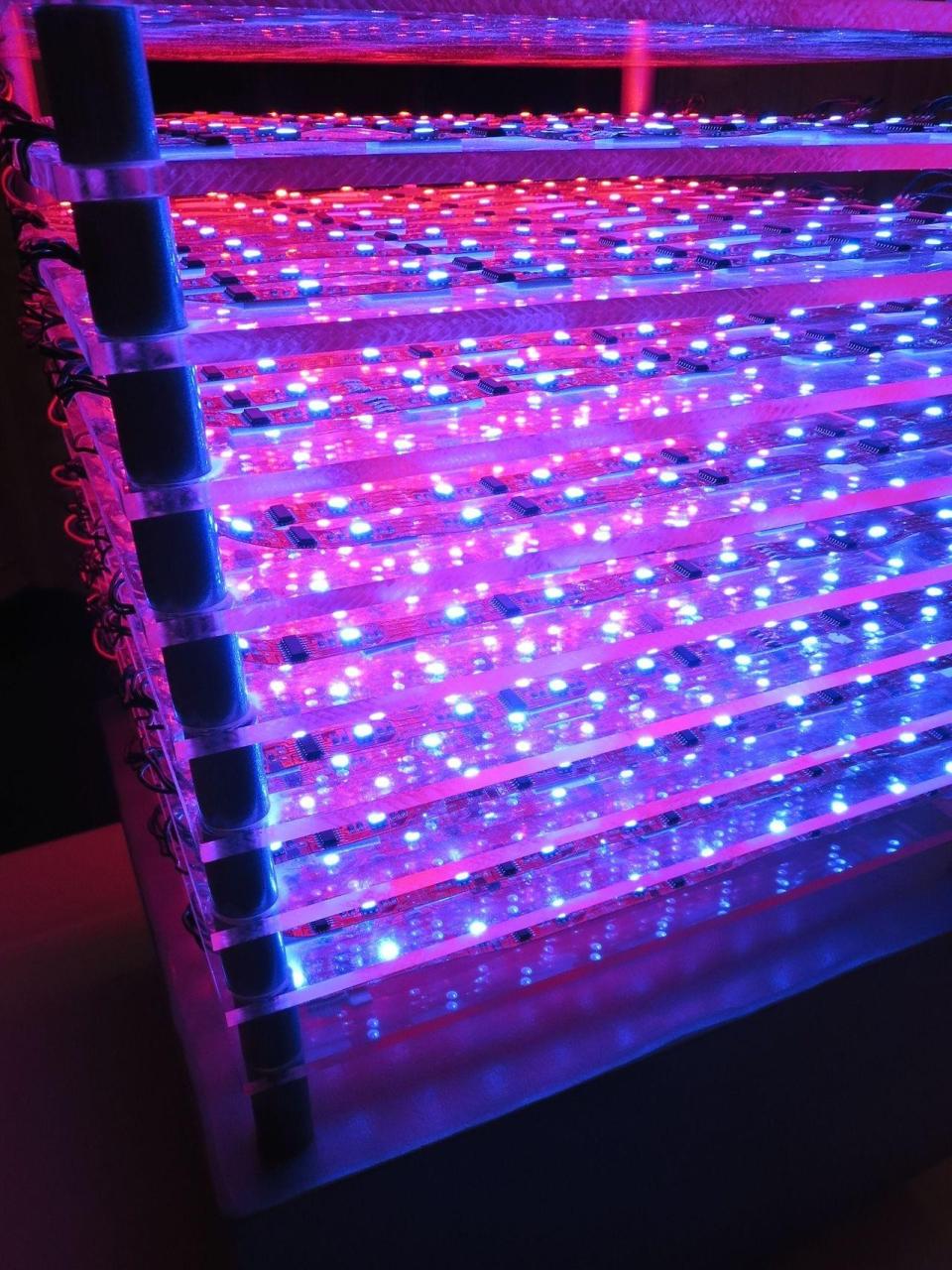White House Hosts Its First Maker Faire, with Robotic Giraffe in Attendance
The White House hosted some unusual guests Wednesday morning: a robotic giraffe, insoles that can recharge your phone, a cube of programmable arrays of LEDs, and a great many 3D printers — including one designed to go to the International Space Station.
But first, President Obama had to admit that he was not clear about one aspect of the White House’s first Maker Faire. “Why is there an ‘e’ at the end of ‘Faire’?” he asked. “Is there jousting?”
“Next year, it may be gone,” Obama warned. “This is America! We don’t have E’s at the end of “fair.’ ”
A bystander confused to see the White House overrun by science-fair exhibits might have simpler questions: However you spell it, what is a Maker Faire? And why does the Obama administration care?
Maker Faires date to 2006, when Sebastopol, California-based Maker Media decided to stage a get-together for readers of and contributors to its Make magazine. Maker Faires have since become something of a franchise — Maker Media stages them around the world and helps other groups host their own versions.
At Maker Faires like one in the District I toured two weekends ago, you can expect to see a spread of indie-produced gadgets with varying degrees of practicality — as well as gadgets that can make other gadgets. There’s one underlying message: The increasing affordability of technologies like 3D printing, laser cutters, and programmable Arduino circuits is democratizing the means of production, and it’s easier to take part and build something than you thought.
For the White House, a Maker Faire both allows Obama to enjoy his Nerd-in-Chief credentials — the president arrived late after taking a little extra time to inspect all this hardware — and to suggest how all this creativity might feed into a resurrection of American manufacturing. Or, as Obama put it: “Today’s DIY is tomorrow’s made in America.”
Email Rob at rob@robpegoraro.com; follow him on Twitter at @robpegoraro.

1 / 9
San Diego inventor Lindsay Lawlor’s “Electric Giraffe” stands 17 feet tall. Piezoelectric sensors in its ears detect your touch, leading it to say, “That tickles” at one point during a demo.

2 / 9
Stanford University researcher Manu Prakash’s “Foldscope” can be made by carefully folding a piece of laser-cut paper and adding about $1 in parts such as a ball lens, a battery, and an LED.

3 / 9
St. Paul, Minnesota-based AnnMarie Thomas and her daughter Sage’s “Squishy Circuits” use dough — who knew it could be mixed to conduct or resist electricity? — to teach basic circuitry.

4 / 9
Obama joked about his reputation for wordiness in discussing Gilles Azzaro’s interactive sculpture of his 2013 State of the Union: “There could have been some edits … the sculpture goes on too long.”

5 / 9
LuminAID’s $19.95 solar-powered light charges on seven hours of sunlight, said co-founder Andrea Sreshta. Blow it up and it yields 10 hours of illumination at its brighter setting — while afloat.

6 / 9
Made in Space’s compact 3D printer is due to fly to the International Space Station on the next SpaceX resupply mission to test the ability of astronauts to print replacement parts.

7 / 9
SolePower’s insoles generate electricity from your footsteps’ force and store it in a separate battery; co-founder Hahna Alexander said an hour of walking yields about 2.5 hours of iPhone talk time.

8 / 9
This array of LEDs by Joey Hudy (famous for the marshmallow cannon that caught Obama’s eye at a 2012 science fair) can be programmed to cycle through various colors or pulse in different patterns.

9 / 9
Marietta, Georgia, teenager Sicily Kolbeck’s diminutive dwelling accommodates a kitchen, bathroom, shower, and living room in 128 square feet of floor; a 40-square-foot loft holds a bed.


